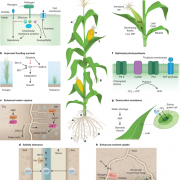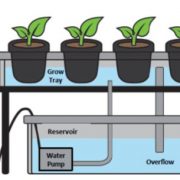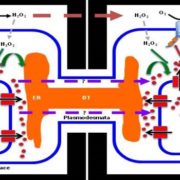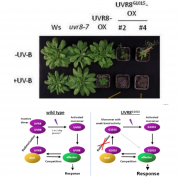Thermal response in plants: leaf hyponasty (Plant Phys)
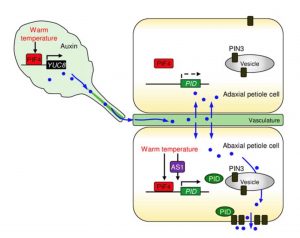 Non-directional stimuli can trigger directional movements in plant organs. For instance, high temperature causes the upward bending of leaf petioles, a process known as leaf hyponasty, which helps to cool the leaves. In this study Park et al. explored the link between leaf thermonasty and auxins. Gene expression analysis under thermal induction revealed that SAUR gene expression is higher in leaf petiole abaxial samples compared to the adaxial ones. Using the DR5:GUS auxin reporter line, the authors found a preferential auxin accumulation in the abaxial petiole region, suggesting that auxin is involved in the thermal regulation of leaf hyponasty. Other players are involved in the process including ASYMMETRIC LEAVES 1 (AS1, a master regulator of leaf polarity developmental programs), and additional auxin signaling components, for instance, PID (the kinase that regulates the PIN3 transporter). In their model, PIF4-triggers auxin production in leaf blade and its transport to the petiole, AS1 directs PID transcription in the abaxial petiole, and PID-mediated PIN3 polarization determines the direction of leaf bending. (Summary by Humberto Herrera-Ubaldo) Plant Physiol. 10.1104/pp.19.00139
Non-directional stimuli can trigger directional movements in plant organs. For instance, high temperature causes the upward bending of leaf petioles, a process known as leaf hyponasty, which helps to cool the leaves. In this study Park et al. explored the link between leaf thermonasty and auxins. Gene expression analysis under thermal induction revealed that SAUR gene expression is higher in leaf petiole abaxial samples compared to the adaxial ones. Using the DR5:GUS auxin reporter line, the authors found a preferential auxin accumulation in the abaxial petiole region, suggesting that auxin is involved in the thermal regulation of leaf hyponasty. Other players are involved in the process including ASYMMETRIC LEAVES 1 (AS1, a master regulator of leaf polarity developmental programs), and additional auxin signaling components, for instance, PID (the kinase that regulates the PIN3 transporter). In their model, PIF4-triggers auxin production in leaf blade and its transport to the petiole, AS1 directs PID transcription in the abaxial petiole, and PID-mediated PIN3 polarization determines the direction of leaf bending. (Summary by Humberto Herrera-Ubaldo) Plant Physiol. 10.1104/pp.19.00139


